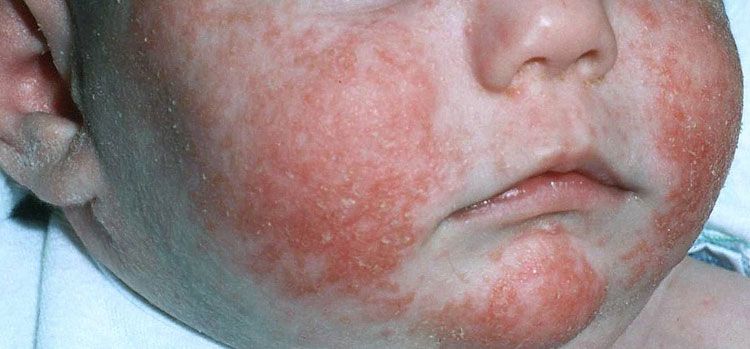- Pharmacology
- Allergy, Immunology, and ENT
- Cardiology
- Emergency Medicine
- Endocrinology
- Adolescent Medicine
- Gastroenterology
- Infectious Diseases
- Neurology
- OB/GYN
- Practice Improvement
- Gynecology
- Respiratory
- Dermatology
- Mental, Behavioral and Development Health
- Oncology
- Rheumatology
- Sexual Health
- Pain
Atopic Dermatitis
This distribution of an inflammatory disorder in a very young child almost always indicates atopic dermatitis. The family history of asthma suggests the atopic diathesis.

A neonate was seen in consultation when brought to the emergency department because of parental concern about a facial rash. The rash had been present since the baby was 2 weeks old. The baby had been “fidgety,” feeding poorly, and rarely sleeping through the night. The mother had lifelong asthma.
Key point: This distribution of an inflammatory disorder in a very young child almost always indicates atopic dermatitis. The family history of asthma suggests the atopic diathesis.
Treatment: Application of both a bland ceramide-based moisturizer and mild corticosteroid were instituted, with resolution of the facial eruption.
Note: This child may benefit from dietary restriction (ie, avoiding highly antigenic foods), and is certainly at risk for asthma and seasonal rhinitis later in life.
Recognize & Refer: Hemangiomas in pediatrics
July 17th 2019Contemporary Pediatrics sits down exclusively with Sheila Fallon Friedlander, MD, a professor dermatology and pediatrics, to discuss the one key condition for which she believes community pediatricians should be especially aware-hemangiomas.
Tapinarof cream 1% demonstrates efficacy in atopic dermatitis patients with skin of color
March 8th 2024Data from a pair of identical, phase 3, double-blind, randomized, and vehicle-controlled trials were presented at the 2024 American Academy of Dermatology (AAD) Annual Meeting in San Diego, California.
